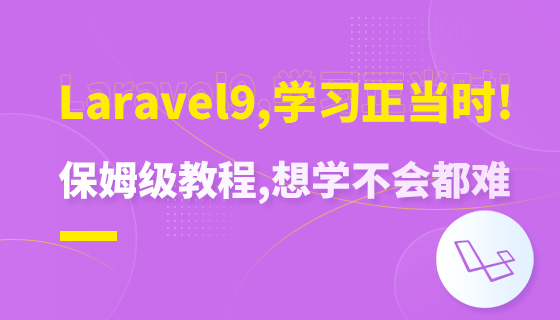
参考 【偶尔e网事】 的 【cocos2d-x入门实战】微信飞机大战 cocos2dx 2.0版本, 偶尔e网事他 写的非常详细,面面俱到,大家非常有必要看下。可以通过下面链接跳转: cocos2d-x入门实战 这里面我以 【cocos2d-x入门实战】微信飞机大战为蓝本,用cocos2dx 3.0r
参考 【偶尔e网事】 的 【cocos2d-x入门实战】微信飞机大战 cocos2dx 2.0版本,偶尔e网事他写的非常详细,面面俱到,大家非常有必要看下。可以通过下面链接跳转:
cocos2d-x入门实战
这里面我以【cocos2d-x入门实战】微信飞机大战 为蓝本,用cocos2dx 3.0rc1翻版。安装环境什么的,我就不说了,网上都可以找到,我直接从游戏开始界面说起。
想往下看的话,你必须会的一件事,就是你已经能创建出cocos2dx3.rc1的helloworld工程。
飞机大战源码和资源放在第四节中,不想看的直接去第四节中找吧
打飞机是一项需要前戏的运动,所以我们加个欢迎界面什么的,搞搞前戏气氛,还是很有必要的。
下面就让我们完成前戏,该做的事情:
1.游戏开始界面
一、首先是开始欢迎界面的展示
这里我们实现了简单静态界面,以及一个炫酷的动态图,虽然只是三秒钟!,我这里直接用了偶尔e网事大神的资源,大神请原谅我把你的飞机升级成3.0版本的,如果不爽,请过来打我~好吧,我好jian.....
二、初始工程的介绍
假设你已经创建了一个名为“PlayThePlane”的工程,那么你的解决方案将会是这样的:
工程是从main.cpp开始执行的:
int APIENTRY _tWinMain(HINSTANCE hInstance,
HINSTANCE hPrevInstance,
LPTSTR lpCmdLine,
int nCmdShow)
{
UNREFERENCED_PARAMETER(hPrevInstance);// UNREFERENCED_PARAMETER 告诉编译器,已经使用了该变量,不必检测警告!
UNREFERENCED_PARAMETER(lpCmdLine); // 要是没加,应该会有这个“warning C4100: “lpCmdLine” : unreferenced formal parameter.”
// create the application instance 创建应用实例
AppDelegate app;
return Application::getInstance()->run();// cocos2dx AppDelegate程序正式开始运行
}Application::getInstance()->run()里面到底运行了什么呢?混蛋,自己跳进去看下不就知道了,又不是陷阱,那可都是宝藏堆。我只告诉你它调用了AppDelegate.h中的applicationDidFinishLaunching();这时候我们看看bool AppDelegate::applicationDidFinishLaunching() {
// initialize director 导演
auto director = Director::getInstance();
// 窗体框架
auto glview = director->getOpenGLView();
if(!glview) {
glview = GLView::createWithRect("PlayerThePlane", Rect(0, 0, 480, 800)); // 窗体名 + 宽高规格
director->setOpenGLView(glview);
// 1.LOOK 该函数会自动按设计宽高和缩放方式适应手机屏幕,设置游戏分辨率 (设计宽,设计高,缩放方式)。
glview->setDesignResolutionSize(480, 800, kResolutionNoBorder);
}
// turn on display FPS 打印帧率,不希望左下角三行出现的 就注释掉 或者设置false
director->setDisplayStats(true);
// set FPS. the default value is 1.0/60 if you don't call this 一秒60帧
director->setAnimationInterval(1.0 / 60);
// create a scene. it's an autorelease object 创建场景
auto scene = HelloWorld::createScene();
// run 导演让场景开始运作
director->runWithScene(scene);
return true;
}glview = GLView::createWithRect("PlayerThePlane", Rect(0, 0, 480, 800)); 我们设置了我们飞机的名字,和容纳的空间
glview->setDesignResolutionSize(480, 800, kResolutionNoBorder);
注释很清楚,就不再解释了。
auto scene = HelloWorld::createScene();这个就是我们的开始场景,auto是c++11的特性。触景生情,好的场景,会让人情不自禁的想把这个飞机打下去,所以我们有必要要让场景炫起来。
director->runWithScene(scene);把scene场景交给导演来运作
三、游戏开始界面的具体实现
我们先看下HelloWorldScene.h代码:
#ifndef __HELLOWORLD_SCENE_H__
#define __HELLOWORLD_SCENE_H__
#include "cocos2d.h"
class HelloWorld : public cocos2d::Layer
{
public:
// 产生一个场景,然后把本Layer层类加入到场景中去
static cocos2d::Scene* createScene();
// 在Layer层中添加精灵元素
virtual bool init();
// a selector callback 退出按钮回调
void menuCloseCallback(cocos2d::Ref* pSender);
// 它的具体实现其实就是HelloWorld::create(),你进入CREATE_FUNC宏定义可以看到
CREATE_FUNC(HelloWorld);
public:
void loadingDone(Node* pNode); // 从开始界面 跳到游戏界面
void PreloadMusicAndPicture(); // 预加载音乐和图片
};
#endif // __HELLOWORLD_SCENE_H__
#include "HelloWorldScene.h"
#include "SimpleAudioEngine.h"
USING_NS_CC;
Scene* HelloWorld::createScene()
{
// 创建一个自动释放的场景
auto scene = Scene::create();
// 创建一个自动释放的layer层
auto layer = HelloWorld::create();
// 场景中加入layer层
scene->addChild(layer);
// 返回场景
return scene;
}
// on "init" you need to initialize your instance
bool HelloWorld::init()
{
// 当你想调用父类的virtual,又想有自己的实现的时候,就这么写
if ( !Layer::init() )
{
return false;
}
Size visibleSize = Director::getInstance()->getVisibleSize();
Point origin = Director::getInstance()->getVisibleOrigin();
// 创建退出按钮
auto closeItem = MenuItemImage::create(
"CloseNormal.png",
"CloseSelected.png",
CC_CALLBACK_1(HelloWorld::menuCloseCallback, this));
closeItem->setPosition(Point(origin.x + visibleSize.width - closeItem->getContentSize().width/2 ,
origin.y + closeItem->getContentSize().height/2));
auto menu = Menu::create(closeItem, NULL);
menu->setPosition(Point::ZERO);
this->addChild(menu, 1);
/////////////////////////////
// 3. add your codes below...
// add a label shows "Hello World"
// create and initialize a label
// 下面的代码去掉,加入自己的代码
// 返回OpenGL视图的大小
Size winSize=Director::getInstance()->getWinSize();
// 预加载图片和音乐
PreloadMusicAndPicture();
// 背景图(精灵)
auto background = Sprite::createWithSpriteFrame(SpriteFrameCache::getInstance()->getSpriteFrameByName("background.png"));
background->setPosition(Point(winSize.width/2,winSize.height/2)); // 设置位置
// 场景中加入背景图
this->addChild(background);
// 加入copyright图片(精灵)
auto copyRight = Sprite::createWithSpriteFrame(SpriteFrameCache::getInstance()->getSpriteFrameByName("shoot_copyright.png"));
copyRight->setAnchorPoint(Point(0.5, 0)); // 描点
copyRight->setPosition(Point(winSize.width/2,winSize.height/2));
this->addChild(copyRight);
// 加入loading图片(精灵)
auto loading = Sprite::createWithSpriteFrame(SpriteFrameCache::getInstance()->getSpriteFrameByName("game_loading1.png"));
loading->setPosition(Point(winSize.width/2,winSize.height/2));
this->addChild(loading);
// Animation是由许多精灵帧组成,可以设置间隔时间,持续时间等,它实际上是包含着一组数据
Animation* animation=Animation::create();
animation->setDelayPerUnit(0.2f); // 间隔时间
animation->addSpriteFrame(SpriteFrameCache::getInstance()->getSpriteFrameByName("game_loading1.png"));
animation->addSpriteFrame(SpriteFrameCache::getInstance()->getSpriteFrameByName("game_loading2.png"));
animation->addSpriteFrame(SpriteFrameCache::getInstance()->getSpriteFrameByName("game_loading3.png"));
animation->addSpriteFrame(SpriteFrameCache::getInstance()->getSpriteFrameByName("game_loading4.png"));
// 通过帧数据创建帧动作(创建序列帧动画)
Animate* animate=Animate::create(animation);
Repeat* repeat=Repeat::create(animate,3); // 重复一个动作的次数
CallFuncN* repeatdone=CallFuncN::create(CC_CALLBACK_1(HelloWorld::loadingDone, this)); // 创建回调函数 CC_CALLBACK_1 代表一个参数
Sequence* sequence=Sequence::create(repeat, repeatdone, NULL);// 让多个动作按照前后顺序逐一执行 repeatdone 放在 repeat前的话,就不会播放执行3次序列帧的动画
loading->runAction(sequence); // 执行上述动画
this->setKeypadEnabled(true); // 设置监听Android的按键,如返回键、菜单键、Home键等。
return true;
}
void HelloWorld::menuCloseCallback(Ref* pSender)
{
Director::getInstance()->end();
#if (CC_TARGET_PLATFORM == CC_PLATFORM_IOS)
exit(0);
#endif
}
void HelloWorld::PreloadMusicAndPicture()
{
//png加入全局cache中 plist存储了
SpriteFrameCache::getInstance()->addSpriteFramesWithFile("ui/shoot_background.plist");
SpriteFrameCache::getInstance()->addSpriteFramesWithFile("ui/shoot.plist");
// 音效
CocosDenshion::SimpleAudioEngine::getInstance()->preloadBackgroundMusic("sound/background-music1.mp3");
CocosDenshion::SimpleAudioEngine::getInstance()->preloadEffect("sound/bullet.mp3");
CocosDenshion::SimpleAudioEngine::getInstance()->preloadEffect("sound/enemy1_down.mp3");
CocosDenshion::SimpleAudioEngine::getInstance()->preloadEffect("sound/enemy2_down.mp3");
CocosDenshion::SimpleAudioEngine::getInstance()->preloadEffect("sound/enemy3_down.mp3");
CocosDenshion::SimpleAudioEngine::getInstance()->preloadEffect("sound/game_over.mp3");
CocosDenshion::SimpleAudioEngine::getInstance()->preloadEffect("sound/get_bomb.mp3");
CocosDenshion::SimpleAudioEngine::getInstance()->preloadEffect("sound/get_double_laser.mp3");
CocosDenshion::SimpleAudioEngine::getInstance()->preloadEffect("sound/use_bomb.mp3");
CocosDenshion::SimpleAudioEngine::getInstance()->preloadEffect("sound/big_spaceship_flying.mp3");
CocosDenshion::SimpleAudioEngine::getInstance()->preloadEffect("sound/achievement.mp3");
CocosDenshion::SimpleAudioEngine::getInstance()->preloadEffect("sound/out_porp.mp3");
CocosDenshion::SimpleAudioEngine::getInstance()->preloadEffect("sound/button.mp3");
// 背景音乐
CocosDenshion::SimpleAudioEngine::getInstance()->playBackgroundMusic("sound/game_music.mp3",true);
}
void HelloWorld::loadingDone( Node* pNode )
{
}
路径
预加载的路径是项目路径下的Resources文件夹
这个是我的工程资源路径:E:\studyCocos2dx3.0RC1\PlayThePlane\Resources
如:SpriteFrameCache::getInstance()->addSpriteFramesWithFile("ui/shoot_background.plist");
其实就是SpriteFrameCache::getInstance()->addSpriteFramesWithFile("E:/studyCocos2dx3.0RC1/PlayThePlane/Resources/ui/shoot_background.plist");
图片加载
我们的图片是用TexturePacker工具把若干图片打包生成的一张总的png和plist,plist保存着png图片中的各个数据,比如名字大小什么的。当然你也可以不用这种整合的,那么加载图片的方式就改变了,比如背景图的加载:
// 背景图(精灵)
auto background = Sprite::create("ui/shoot_background/background.png");
background->setPosition(Point(winSize.width/2,winSize.height/2)); // 设置位置
// 场景中加入背景图
this->addChild(background);
音乐加载
预加载中,有一个不是预加载,而是直接加载开启的:
CocosDenshion::SimpleAudioEngine::getInstance()->playBackgroundMusic("sound/game_music.mp3",true);这个是直接把开启了背景音乐。
图片动画效果以及游戏开始的回调
CallFuncN* repeatdone=CallFuncN::create(CC_CALLBACK_1(HelloWorld::loadingDone, this)); // 创建回调函数 CC_CALLBACK_1 代表一个参数 Sequence* sequence=Sequence::create(repeat, repeatdone, NULL);// 让多个动作按照前后顺序逐一执行 repeatdone 放在 repeat前的话,就不会播放执行3次序列帧的动画 loading->runAction(sequence); // 执行上述动画Sequence* sequence=Sequence::create(repeat, repeatdone, NULL);我的理解是,Sequence存放动作队列。其中repeat, repeatdone, NULL这个三个动作是顺序执行的,也就是说先执行完repeat动作(小飞机飞三次),然后执行repeatdone,从而触发回调函数loadingDone(),游戏的开始就是在这里哟。
好了,到这里就完成了所谓的游戏开始前的界面。下次说什么我也不知道,写什么,说什么吧。
我看了下我的排版,着实奇怪,有时候行和行间距离很近,有时候很远。而且怎么设置字体啊,我想一开始就是小型字体,而不是每次写完一段,再手动去改。
大家有什么不懂得,可以直接问我(不要问的太深入~),我也是刚开始学cocos2dx,大家一起学习。

已抢65729个
抢
已抢31653个
抢
已抢17402个
抢
已抢8835个
抢
已抢11407个
抢
已抢23649个
抢